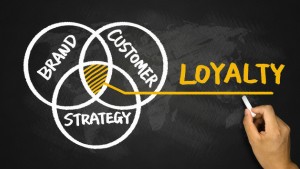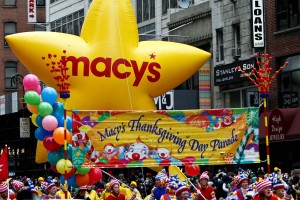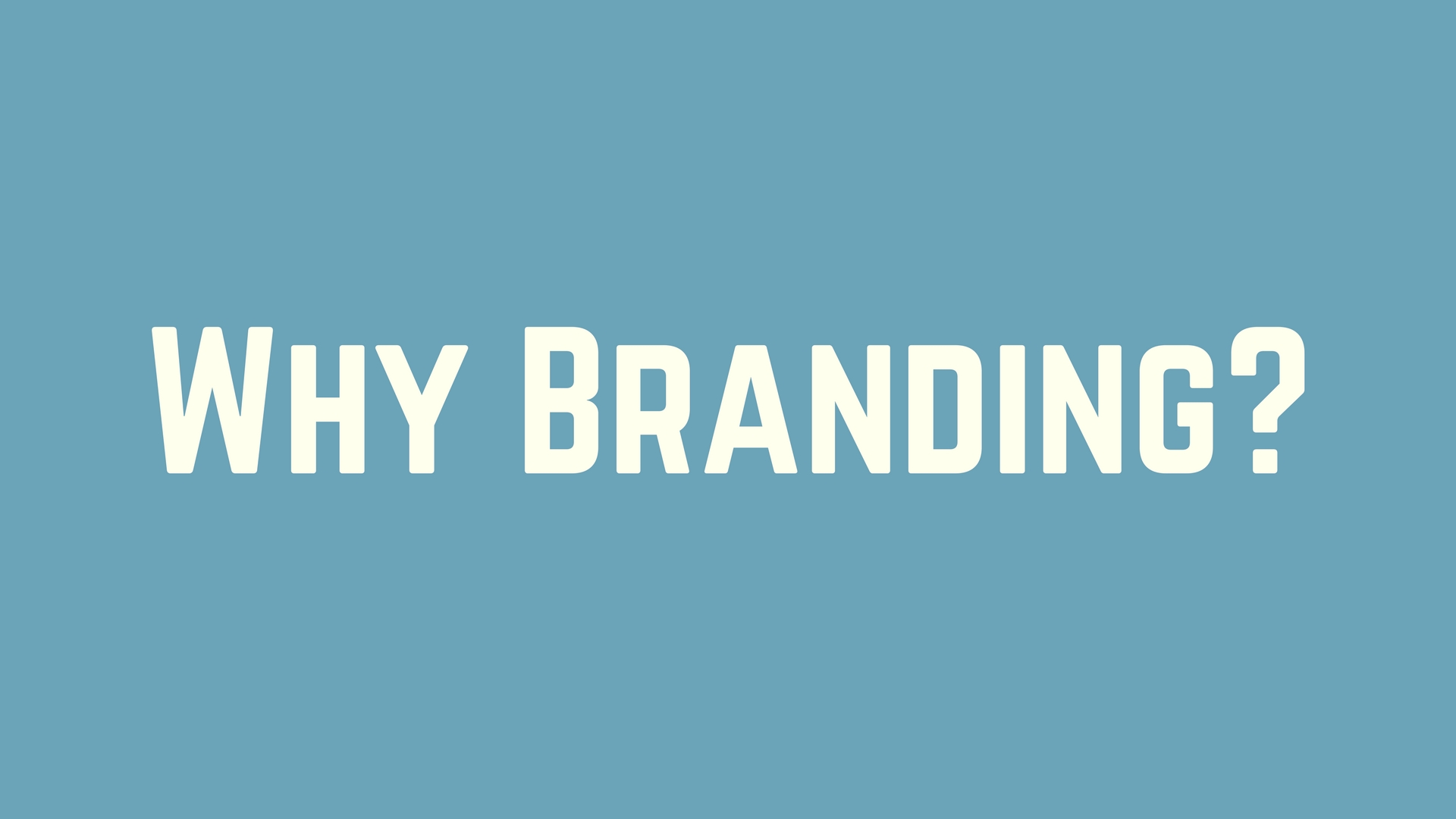How Brands Can Bring their Values to Life Every Day
"Branding is knowing what you stand for and bringing it to life."
The originator of this quote is unknown, but it could easily be attributed to anyone who has built, worked with or successfully developed a brand.
It takes the brand beyond tangible aspects like your name and logo and elevates your brand into something that is lived by employees, brand ambassadors and proper execution of your brand’s character. Brands today are increasingly influenced more to ensure that each and every aspect of their brand – from their logo and name to their employees and customer touch points – fit within a well-defined ethos, putting more value on these brand values and increasing their influence on the brand’s development and post-launch actions.
But how can brands ensure that they have the necessary ingredients to bring their values to life every day?
Make it your top priority and look to what will be
It’s OK if you don’t know right away what you stand for when it comes to the brand. But if you don’t, finding out is your first priority. Avoid being shortsighted, looking at what you think you brand stands for right now.
You’ll soon see that with almost every aspect of the brand, this will evolve throughout the development process. Instead, look to how you want your brand to connect and speak to your audience. Ask yourself what characteristics you’d want to see in a brand that you connect with, and look to how those brands fit with your long-term brand visions.
Build values with a foundation of persona
What you stand for, how you act, what is important to you – these are all personal characteristics that, when developed into a brand strategy and development, will serve as the foundation for your brand’s values.
These elements can work together because they all serve a similar purpose, as puzzle pieces in the overall picture of either a person, or in this case, a brand. Therefore, when creating the value base to which you will build your brand, look at what will be the defining characteristics of your brand’s persona. Then, take what rises to the top and put it into a brand development strategy. These are what you stand for and will be brought to life in your brand.
Provide your people with the values early and often
Your employees are the most important carriers of your brand values – they are the ones in the public eye the most and the ones who have the power to strengthen or bring down your brand’s public view.
Therefore, the brand value proposition and training should begin as early as possible in their time connected to the brand. Onboarding, early training the hiring process – however you can plant the brand value seed right at the beginning. This will not only allow these characteristics to be ingrained and have the most time to grow, but it will also show up front how important this aspect of the brand is.
Brains Behind the Brands with Brittany Scott, Creative Director
We’re excited to introduce a new Brand Salsa series, “Brains Behind the Brands,” In each edition of the series, we will be shining the spotlight on one of our brand experts and getting their thoughts on a range of topics, from new trends in the branding industry to advice they’d give someone working on building their brand.
Our first expert is Brittany Scott, Addison Whitney’s Creative Director. Brittany has extensive experience creating brands, specifically on the verbal branding side of the process. Below, we get a look inside the brain behind the brands:
When thinking of creative cues for a new name, where should organizations or products go for inspiration?
Companies tend to be laser focused only on their products and their competitors. While it is valuable to know your audience, one of the most inspiring exercises can be looking outside of your industry and observing what other brands are doing.
For example, if you are naming a sports car, don’t just focus on what’s happening within automotive naming, but expand out to other industries that may have similar audiences. For a sports car, you may find parallels in extreme sports, energy drinks, or luxury accessories. Use these observations to broaden your thinking and explore new ideas.
How can brands ensure that their corporate identity name will be built to last?
Changing a corporate identity can be a lengthy and costly process. To make your brand last as long as possible (and maintain all that equity you will soon build!), be sure your name is flexible enough to adapt to future growth. Starting a company with a name that is too limiting (ex: too descriptive of one product or service) may set you up for a name change in one, five or 10 years when you’ve expanded your offerings beyond this initial description.
This is why many companies use aspirational concepts instead of descriptive or functional ones. They try to convey the benefits they will deliver to their customers in the future. By envisioning results rather than products, you can create a name that extends and grows with your business.
Can you describe the feeling of seeing a name you created hit the market?
It’s always fun to see a product that we’ve named hit the shelves. Some products are easy to see and buy (for example, consumer goods like soft drinks or snacks). Others are harder to track down (like pharmaceuticals or technology offerings) but still equally exciting for my team when they launch.
At Addison Whitney, we have a whole display at the office of products we’ve named (the smaller ones - unfortunately we can’t fit cars and appliances in there!).
What do you see as the “next big thing” in naming – either in the pharmaceutical industry or consumer market?
The biggest trend in pharmaceutical naming right now is simplicity. Physicians and consumers are overwhelmed with complex names with too many weird letter combinations. Even brands designed as “empty vessels” (names not built around a real word or concept) are becoming increasingly easier to say and spell. While the pharmaceutical market is still very crowded and we have to use caution to ensure safe prescribing, we hope to continue to work towards simpler, more sophisticated names that appeal to all target audiences.
For consumer products, I am loving the trend towards what I’ll call “clever functional.” Similar to pharmaceuticals, consumers want simple, telegraphic names that are easy to remember. But consumers also aren’t stupid. So savvy companies are creating descriptive names with a twist. One of my favorite new product names is “Innovasian Cuisine.” It’s easy to understand and broad enough to encompass a growing product line. It makes me smile and is fun to say. I am also a fan of the brand name “Seeds of Change.” There are so many layers of meaning to this one, it really piques my interest and I think it appeals to consumers on an intellectual as well as emotional level. And let’s not forget about “Sweetos,” the new cinnamon sugar version of Cheetos. How perfect is this name?!? It’s an obvious extension of the Cheetos brand, but with a clever twist that functionally aligns to the product.
How important is it to take URL availability into account when creating a name?
Everyone wants to own the .com for their business. And for the right amount of money, many URLs are available for purchase. However, with the increasing ease of search and the increasing impatience of users, less and less people are typing in “www.YourName.com” to go to your site. Most are using a search feature to find information, so I think it’s better to focus your efforts on SEO (search engine optimization) than worry about your URL.
Don’t let URL availability deter you! If a single word URL is not available, adding a descriptive word or phrase is perfectly acceptable (Premier Hospital Solutions could be www.premierhospitalsolutions.com instead of just www.premier.com). And if you are naming a product or service, consider whether it even makes sense for it to have a standalone URL. Many products can nest under the master brand’s website, making it faster and easier for users to find them.
What to learn more about how you can build your brand? Let's talk.
Teaching an Old Dog New Tricks – Why Branding Isn’t Just for New Businesses
When starting a new company, building your brand should be at the top of your to-do list. Having a strong brand in your arsenal is crucial to starting at the bottom and moving up the ladder. These new organizations seemingly live at the forefront of the brand development landscape, driving new best practices and rolling out new techniques all the time.
But just because you’re an older organization that came to fruition before strategic brand building was commonplace doesn’t mean you’ve missed the boat. If your brand needs a refresh or a restart, don’t feel as if the latest and greatest branding techniques are only left to the upstarts and newcomers.
There’s no better time than the present to begin engage the appropriate parties and begin the process to bring your brand up to speed with your competition and maximize its ability to drive success.
Without going into too much detail on the brand development process, let’s explore three reasons why branding is important for the established organizations in the business world.
Brand? What’s a brand?
The first reason is that you may not actually have a “brand” in position for your organization. There are a number of reasons why this may be the case, but it’s quite possible your organization has been riding on the success of a particular product or two, making the strength of your organizational brand minimal.
But just because you’ve had success before doesn’t mean you can’t set yourself up for even more success in the future. Diving into building a strategic brand will almost assuredly answer questions you never even thought to ask and take your organizations you never thought you could go. It could be as simple as creating a visual brand that drives a new website design or, for the first time, defining who your target audience is and identifying how to best position your brand for them. No matter what, taking that leap will open new doors for your organization and give you a part of it that will work for you.
No matter when you started the game, everyone is still playing on the same field.
Having an established history and a long list of accomplishments are two things that every business would love to have. But in the day-to-day reality of the marketplace, the memory of today’s consumers can be short, often negating much of the historical advantage of an older brand. What matters is more of right in front of them in that moment – when brands are judged by “what have you done for me lately” and “what do I think of you right now.”
This “right now” mentality puts a heavy emphasis on ensuring that your brand, no matter its age, speaks to consumers as you’d like it to, getting your key differentiation messaging across right away. From names that make sense and connected directly to what your organization offers to logos and visual branding aspects that are aesthetically pleasing and in line with current trends, your brand needs to bring itself up-to-date.
What made sense before may not make sense today.
One of the biggest reasons why organizations are in need of an updated brand is that they’ve simply outgrown the old one, if they even had a “brand” to begin with. When your organization began, maybe you offered two main products, which dominated everything about who you were – your name only spoke to those two, your logo featured them both prominently, your target audience was the market for those two – but now, you’re leaving a lot on the table.
The best brand refreshes and rebrands are able to toe the line between old and new, artfully connecting what made the brand great before with what makes it great today. This is especially true for organizations whose newer offerings are now the star – when they weren’t acknowledged in the brand elements, too much weight was put on them succeeding on their own. They were lone wolves out on the market – quite possibly, the majority of their audience had no idea there was a connection between that product and your brand. So bring them in from the cold and let them bask in the warmth of the overall brand’s strength.
Has your company recently experienced change or growth? Due to changes in business strategies, acquisitions, internal organizational changes or the addition of new products to a portfolio, your brand strategy may need to evolve over time. Click here to download your free copy of “Your Brand’s Guide to Corporate Change” today, and learn how to align your brand and business strategy for success!
How We Answer the Question: "Why Branding?"
I was recently looking through AddisonWhitney.com, and when one of the sliding boxes popped up, what it included caught my eye, talking about who Addison Whitney is and what we do:
“…Helping companies envision their futures – through design, naming, research & brand strategy.”
This phrase stood out to me – and not just because it came from the AW site. The concept of a brand helping to shape a company’s future, along with its ability to put into motion the future they envision, shows the true impact of branding and brand development and drives the case to developing a strong brand.
It’s a question we hear all of the time – “why do I need to create a brand? Why branding?”
To me, the best way to answer this question is with a new question “What is branding?”
Branding is... a researched, thought-out, creative name, one that encapsulates the essence of the brand in verbal form. It’s a name that speaks to the consumer and lets them into what the brand is about while also finding a place in their memory and in their willingness to speak it to others.
Branding is... a logo that jumps out from the competition, and is created with the due diligence required to work on whatever platform it sits. It’s a color palette that keeps your visual brand interesting while also keeping it consistent, building brand equity as consumers walk by and drawing them in with its aesthetically pleasing look.
Branding is... the research behind the decisions made throughout the process. Nothing great is created in a vacuum, and that includes brands. It’s speaking to your target audience to discover that a name candidate you thought would be a home run actually needs some refinement before it can reach its true potential, and finding out what the consumer wants your brand voice to say in order to make the emotional connection necessary to build brand ambassadors.
Branding is... the strategy decisions that drive these elements, creating the road map that will get the brand from nothing to something great. It’s the identification of the target audience, the analysis of the competitive landscape, the positioning and architecture of the brand name and any upcoming brand additions, the brand guidelines that are built to ensure that every usage and interaction of your brand is consistent and powerful.
These reasons, these aspects of branding are why its strong development is so important. Creating and growing any business is a process that can take large amounts of time and energy to achieve – that’s a given. So why not spend some of that time and energy to create something that will work for you even after it is launched?
So go ahead, envision your future. Envision the future you want your company to have – where you want it go and the success you want it to achieve. Then look at it through the lens of what a strong brand can provide. If you do this, then “why branding?” becomes an easy question to answer.
Has your company recently experienced change or growth? Due to changes in business strategies, acquisitions, internal organizational changes or the addition of new products to a portfolio, your brand strategy may need to evolve over time. Click here to download your free copy of “Your Brand’s Guide to Corporate Change” today, and learn how to align your brand and business strategy for success!
How Do You Know If You've Achieved True Brand Loyalty?
A consumer is at the store, faced with a specific need and a wall full of potential solutions, looking to make a purchase decision.
This is the moment of truth for any brand – the first barrier to purchase has been crossed – the consumer is in the door and is considering that brand as an option. But success has not yet been achieved, as there are a number of factors and situations which play into a purchase decision, all of which are running through their mind as they work through the decision.
But just then, another consumer walks down the aisle toward our subject, heading straight toward the same wall of products. The difference in this instance, however, is that the second consumer heads straight toward a particular brand, without hesitation or pause.
Curious at how such a quick decision could be made, the first consumer asks the second what made it seem so easy?
“I knew exactly which brand I would get on my way here,” the second one says. “To be honest, I couldn’t even tell you what other brands make this product. It’s Brand X for me, every time.”
There it is – the goal of any brand in a competitive marketplace. To have consumers who put your brand above all others without question. It takes time and effort to achieve and maintain. It’s brand loyalty.
Consumers become loyal to certain products and brands for a number of reasons.
In some instances, the loyalty is driven by prudence. If a product provides consistently superior quality or a good price, then it’s common sense that a consumer would establish brand loyalty. Who wouldn’t lean toward the brand that is bigger, better, faster or cheaper than the competition?
The problem comes when this gets mistaken for true brand loyalty. In reality, it rarely has anything to do with the brand itself.
Plus, it’s difficult to put much weight in the “loyalty” aspect of the equation when a product that is even bigger, better faster or cheaper than the original comes along and with it goes the same consumer from before.
No, true brand loyalty supersedes these traditional purchase drivers, revealing itself as a force upon the consumer to which typical purchase-driving factors do not apply. Much like the situation above, loyalty brands are first, last and everything in between when it comes to choices for their loyal consumers.
How can you really know if you’ve achieved brand loyalty? Here are three indicators:
Consumers seek out your brand time after time, regardless of if there’s a new kid on the block.
It’s the worst nightmare for any well-established, legacy-type brand: you’re comfortably sitting at the top of the heap, but then a new brand hits the market, looking to steal the eyes and purchases of your core consumer base. However, this is really only an issue for those brands who have mistaken a sense of brand loyalty for the aforementioned common sense loyalty.
But true brand loyalty? That will make a consumer look at the new kid on the block and think, “no way I’m switching – I’ve got my brand.” Be that brand.
When your brand is a part of the consumer’s life even when they aren’t purchasing.
They don’t technically work for your brand, but it’s safe to say that these people do just as much, if not more, to spread the word for your brand than even your own employees. They’re called “brand ambassadors,” and they are defined as consumers whose loyalty doesn’t end when they make a purchase.
The connection with your brand is so strong that they want others to have what they have – in other words, your brand ambassadors fancy themselves as members of an exclusive, brand-connected club, and they want to expand the membership.
When your brand can evolve and change, without fear of losing your core consumers.
Every brand must evolve throughout its lifetime to keep up with ever-changing consumer wants and needs. These evolutionary shifts can touch all aspects of a brand, whether it is a visual branding update or a verbal brand name change, even well-established and successful brands know that complacency leads to stunted growth, and eventually, being passed by the competition.
As the saying goes, “you can’t judge a book by its cover” – for a brand going through a brand evolution, the loyalty aspect speaks to this point. Brand loyal consumers know that despite any visual or verbal changes, the core aspects of what makes a brand loyalty-worthy did not change, and they know each and every interaction with the brand will serve to reinforce their loyalty.
Has your company recently experienced change or growth? Due to changes in business strategies, acquisitions, internal organizational changes or the addition of new products to a portfolio, your brand strategy may need to evolve over time. Click here to download your free copy of “Your Brand’s Guide to Corporate Change” today, and learn how to align your brand and business strategy for success!
March Madness: When Even the Floor is Branded
This week, 68 teams from around the country will take the floor to battle for a national championship in the NCAA Men’s Basketball Tournament. “March Madness” as it’s known to millions of fans (some more casual than others), is one of the biggest sporting events in the country each year. And as any branding expert will tell you, that much attention brings an even bigger need for a strong branding production.
We’ve covered how the tournament can help the brand efforts of smaller schools who make a strong appearance, and the brand strength of the term “March Madness” is well-known, but the branding of this event literally and truly starts from the ground up.
The NCAA, although classified as a non-profit organization, knows the monetary value of all of those sets of eyes on their event from start to finish, with every game of the tournament broadcast on television and millions of brackets filled out, causing even more attention to be paid to even the earliest games.
They also know not to pass up a chance to brand every element of the tournament, from the “First Four” games where eight teams battle in Dayton, Ohio in what essentially count as play-in games to the main tournament, all the way to the NCAA logo sewn into every jersey of every player on every team participating.
What to learn more about how you can build your brand? Let's talk.
But there’s one branded element that may hold the title as the most watched and most overlooked branding of the entire event – the actual floors on which the games are played.
Yes, March Madness branding is so all-encompassing that even the very playing surfaces are incorporated into the overall brand profile and given a high level of attention to ensure they are both brand compliant but also provide their own unique addition to the visual branding.
The branding of the floor starts with at the middle, where each court is anchored by the logo of March Madness, stretching across almost from three-point-line to three-point-line and serving as the eye-catching visual branding element of the court.
Here's a sneak peek at what the #MarchMadness courts will look like this year! pic.twitter.com/CxAIAs4ALL
— NCAA March Madness (@marchmadness) March 2, 2017
Then, along the edge of the court, along the one baseline and both sidelines, the basic information is provided – where the game is being played, what round it is, and who is the host team/conference. The tournament tagline, “The Road to the Final Four” stretches across the other baseline, joining the halfcourt logo as the consistent brand aspect across each location.
Now, some have clamored for the return to the old way of doing things, where the floor of each venue stayed the same as it was the entire season for whomever played there, providing a kaleidoscope of colors, logos, designs and wood finishes whenever you switched from game to game. The only sign that you were watching a Tournament game was the NCAA logo decal placed somewhere on the court.
While it may have made things more visually interesting, the NCAA knew that it was the very opposite of what they needed to do to strengthen the brand. March Madness is one of their most prized events, one that brings in enough money and attention to drive the majority of the association’s work. And when you have an asset this strong, you do everything you can to tie it back to you.
Today, with the similar-but-not-identical designs and the focus on key elements of the overall March Madness and NCAA brands at the forefront, each court serves its purpose as both informational and branded – oh yea, it also is counted on to host the actual games.
The Key to Ensuring Smooth Sailing When Creating Your Brand
There you are. Right in the middle of building your brand, and things couldn’t be going any better. It’s been smooth sailing the whole time – you have created a name that you love, your visual brand development process has produced logos, color palates and collateral that are aesthetically appealing and have you sure they are on the fast track to iconic status.
But don’t start printing the “best new brand” certificates quite yet.
It could make itself known in a number of ways. Maybe you have a dream of one day expanding your offerings to include new products, and you realize your current name would be outdated. Or maybe your logo, for all its beauty, is unable to stand on its own as a representative of your brand.
However it comes up, the problem is still the same – in the race to a new brand, you forgot one important piece of equipment: a strong brand strategy.
Not to worry – this is a situation in which many organizations find themselves when developing their brands. The need to get out of the blocks quickly and to get tangible brand elements created often overshadows the need or desire to make step one of the process a strategic one.
As you can probably guess at this point, this is a mistake. A strong brand strategy is the crucial foundation on which a brand is built, and without one (to keep going with the construction metaphor), your brand is likely to crumble.
Build Your Brand Like You’d Build a Product
To put it another way, let’s compare building your brand to creating a new product, such as a new toy.
Now, it would be nearly impossible to find an organization that would begin production of the new toy before doing the necessary background research and answering the key questions that will outline the toy’s features. Market analysis, competitor audit, features discussion, and more – these decisions drive the rest of the toy production process, and without the associated answers, production would resemble a directionless trek toward a hopeful (but unlikely) success.
Brand development falls in this same path. And the brand strategy is equivalent to making the decisions that drive the process. In fact, many of the same questions that are answered in toy production are also answered in brand strategy development, such as where will the brand/product fit in the competitive landscape, who is the target audience, and what is the desired end result?
The answers to these questions serve as the starting point for the entirety of the brand strategy, and overall branding, development. They touch each aspect of the process, driving how your brand will look, sound, present and position itself, etc.
Not to mention, these answers will identify in which areas there is an opportunity to connect across elements – for instance, you may find that your audience does the majority of their shopping online, therefore your strategy will involve a heavy digital section, ensuring that your name is easy to spell and has an available URL, and that your logo is easily translated to digital screens of all shapes and sizes.
Look Long Term Now, So You Don’t Have to Try Again Later
It’s not enough to just look at these questions in a vacuum, however. One of the hallmarks of a successful brand strategy development and planning concept is to examine each section with a big-picture and long-term mentality. This will prevent a short-sidedness that inevitably creates a brand that is on the fast track for rebranding status much sooner than it should.
Take the aforementioned name issue, where your organization expands or changes its product offering, rendering your name outdated and unconnected to what the brand currently represents. In this case, the decision must be made to either stick with the current name, hoping that any brand equity that has been built up is enough to bridge the newly formed gap between name and brand, or move in a new verbal branding direction, essentially starting over in your brand’s path to relevancy and recognition.
In summary – do you want to create a long-lasting, differentiating brand in a way that is truly smooth sailing? Do you want to ensure that your brand development process covers all of the necessary elements, setting the brand up for success now and in the future?
Becoming a Tradition-Synonymous Brand
In 1924, employees of the Macy’s department store, looking for a way to celebrate Thanksgiving, marched down 34th Street in New York City dressed in vibrant costumes, with floats, bands and live animals. This began an annual tradition that today is watched by over 44 million people each Thanksgiving morning and stands as the second-oldest Thanksgiving Day parade in the country.
For years, this was my only exposure to the Macy’s brand. Although I grew up in an area with no Macy’s locations nearby, it was one of the most well-known brands of my childhood, an achievement attributed solely to its name gracing the parade that played on the television every Thanksgiving morning.
I doubt I’m the only person who has that same story and brand connection – which, if you think about it, is quite a feat for a three-hour event that comes once a year.
Outside of fireworks shows and cookouts by the pool, to many Americans, the 4th of July means the Nathan’s Famous Hot Dog Eating Contest. Thousands of attendees and millions of television viewers tune in for the Independence Day tradition, spearheaded by a brand with little equity outside of its native Northeast, but which is now synonymous with the holiday and the event.
These are just two examples of how a brand has attached itself and eventually become synonymous with a holiday tradition. They’ve reached outside of their usual consumer audience and established brand equity with a portion of the marketplace with little to no brand knowledge outside of the name association.
In doing so, they did something no advertising or marketing campaign could do – they became connected to tradition.
Consumers love tradition. They love familiarity, regularity and nostalgia. Traditions bring out strong, deep, ingrained emotions within an individual, and to hitch your brand to this is to elevate it to this level.
In doing so, you provide a shortcut to the summit of the brand equity mountain – creating an emotional connection between the consumer and your brand. Once established, you have put your brand ahead of the pack within your space, as consumers who are unsure of the specifics of each brand within a category will ultimately choose the one they are either more aware of or have an emotional connection with.
For the most part, success in sales figures and choices from consumers across brands is even when it comes to core consumers and those who have strong brand loyalty. The difference between being at the top of your space and falling behind comes in pulling in the “unaffiliated” consumers – those with no preconceived loyalty to a specific brand, whose purchasing choices come from other factors, such as price, quality and, particularly important to this topic, brand familiarity.
Back to the Macy’s example. They are the crème de la crème of tradition-synonymous brands, not only because their name is attached to an event on a holiday that itself is synonymous with nostalgia, but also because watching the parade has become second nature to many families on Thanksgiving, who refer to it not as just a “Thanksgiving Parade” but as the “Macy’s Thanksgiving Parade” or even just the “Macy’s Parade.”
As such, if these same consumers were at a mall with their choice of department stores to enter, and had no prior knowledge of the ins and outs of the store brands available, odds are very good that they would tap into their emotional brand connection and choose Macy’s.
In the department store space, the majority of the brands are on equal footing. Their pricing is very similar, the products they carry don’t vary widely from brand to brand, and they all have sizeable presences in the consumer marketplace.
So how can Macy’s separate itself and drive consumers into the store and into the purchasing mindset? By being connected. It doesn’t hurt that the very thing they are connected with sits at the start of the biggest shopping time of the year – when the masses hit the stores at 3 a.m. on Black Friday, the images of the Macy’s parade are still fresh in their sleep-deprived minds.
Such is the goal for brands looking to find their tradition match – expand the brand, connect with consumers and become permanently attached to the event or holiday.
4 Characteristics of Leaders that Help Build Strong Brands
As with most aspects of business, a successful branding effort starts at the top. The brand must be developed in such a way and with an end product that provides for easy and full buy-in from leadership across the organization.
But what is often overlooked is how the characteristics of the brand are not the only factors involved in leadership’s role with the brand. In fact, it is a two-way street. Leaders who wish to preside over successful brands must also possess certain characteristics in order to utilize their role in the organization to the fullest extent when dealing with the brand.
- Understanding of the Importance and Impact of Brands
In order to fully integrate branding into their business mindset, they must first and foremost have a strong understanding on why it matters in the overall organizational picture. These leaders know that a strong and differentiating brand is often a crucial element to success, and in addition, know all of the various areas of business a brand will impact.
- Knowledge of the Brand’s Target Audience
When developing a brand, an initial step in the process is identifying the key target audiences to whom the brand will ultimately communicate. Strong brand leaders will be a contributing member of these discussions, as they will have a deep knowledge of these groups and the benefits they could provide for the brand.
- Affinity for Process-Driven Actions
Building a brand isn’t an overnight creation; nor is it an undertaking to go on without a strong plan in place. As such, a strong brand development favors a leader who sees process-driven actions as second nature. They see road maps, strategic planning and data-based decision making as hallmarks of strong organizations, a mindset that translates into strong brands.
- Passion for Living the Brand
It has been said that a brand’s employees are its most important marketers. They are the ones coming face-to-face with the consumer and having the biggest impact on audience reaction to the brand. To repeat a phrase from the beginning of this column, that mindset starts at the top. These employees want to live the brand and they look to the leadership for motivation and guidance in doing so. If the most visible brand advocates aren’t passionate about the brand, it makes it very difficult for those under them do be that way.
A leader’s impact on the brand is massive. In that sense, branding is identical to a vast majority of the other sections of a business or organization. It’s also no coincidence that many of these characteristics can also be applied to quality leadership in general – building and sustaining a successful brand is not a foreign concept, it’s one that can easily mirror your business actions.
Has your company recently experienced change or growth? Due to changes in business strategies, acquisitions, internal organizational changes or the addition of new products to a portfolio, your brand strategy may need to evolve over time. Click here to download your free copy of “Your Brand’s Guide to Corporate Change” today, and learn how to align your brand and business strategy for success!
Why You Should Keep the Focus in Your Brand Development
We’ve all heard of “shotgun marketing,” where a campaign’s messaging is, without much direction or specificity, “shot” into the market place, with the hope that something along the line will hit.
We’ve also seen how poorly these campaigns often perform, banking on long odds and a sense of faith that the campaign may connect with a minor percentage of the target audience. Not only is this a high-risk, often low-reward tactic for a brand’s messaging, it’s also one that fails to establish any momentum beyond its own time frame.
This is because even if there are a few, scattered instances of success with the audience, there is little opportunity to record and analyze what exactly made it work. As such, the tendency will be to follow a similar game plan for subsequent campaigns.
When it comes to brand building, this constant starting over and relying on chance-based efforts take up time and money, two crucial components to successfully build and create a brand. Especially in the beginning of the brand’s life cycle, it is vital that momentum is built to allow the brand to launch with a strong foundation and keep it moving through the ups and downs.
On the contrary, a focused, targeted and well-strategized brand building campaign will yield results at a much higher rate, and will provide the necessary data of what works and what doesn’t works to help build the road map moving forward. These brands are built by identifying early on who their target audience will be, and catering the messaging to fit the wants and needs of these consumers.
Additionally, because the brand is employing repetition and familiarity in its messaging, the audience’s recognition of the brand will take hold quicker and more firmly throughout the campaign.
In other words, building a brand can be compared to a marathon race. The starting line is your initial brand strategy kick off, and the finish line is the product launch – but in between, you must navigate numerous hills along the path, powered only by your growing brand equity and messaging success.
With an unfocused brand building strategy, it will be a slow and bumpy road, as the brand moves forward with each scattered success and then stops as the other poorly aimed efforts fall flat. Trying to cross the hilly terrain and reach the finish line will be a trip filled with false starts, more difficult than it should be as the brand yearns to find momentum.
However, a focused brand building strategy allows for gradual building of brand equity and a higher success rate, so as the brand runs up the first hill, it is growing faster and stronger, allowing for the subsequent ups and downs to become minor bumps in the road.
What are some other ways brands can ensure a focused strategic direction? Aside from having a clear and well-defined target audience, the consistency of the remaining brand elements also play a part. In particular, this means that the visual and verbal branding efforts must work in tandem to build the brand, instead of staking out on their own and hoping there can be some sort of connection established later on.
Additionally, these two elements must tie back to the overall brand positioning. The brand name in particular is a highly visible aspect of a brand, no matter where in the building process is currently falls, and making it difficult for the audience to connect the name back to the core purpose of the brand is an unnecessary hurdle to create, and will turn off some key members of the audience.
There’s a reason brand building and brand strategy discussions often include the words “road map” – a good brand is built when the process is planned and the end goal is within sight. When embarking on this journey, keeping the focus is key to staying on track and ensuring that your brand ends up where you want it to be.
Has your company recently experienced change or growth? Due to changes in business strategies, acquisitions, internal organizational changes or the addition of new products to a portfolio, your brand strategy may need to evolve over time. Click here to download your free copy of “Your Brand’s Guide to Corporate Change” today, and learn how to align your brand and business strategy for success!







